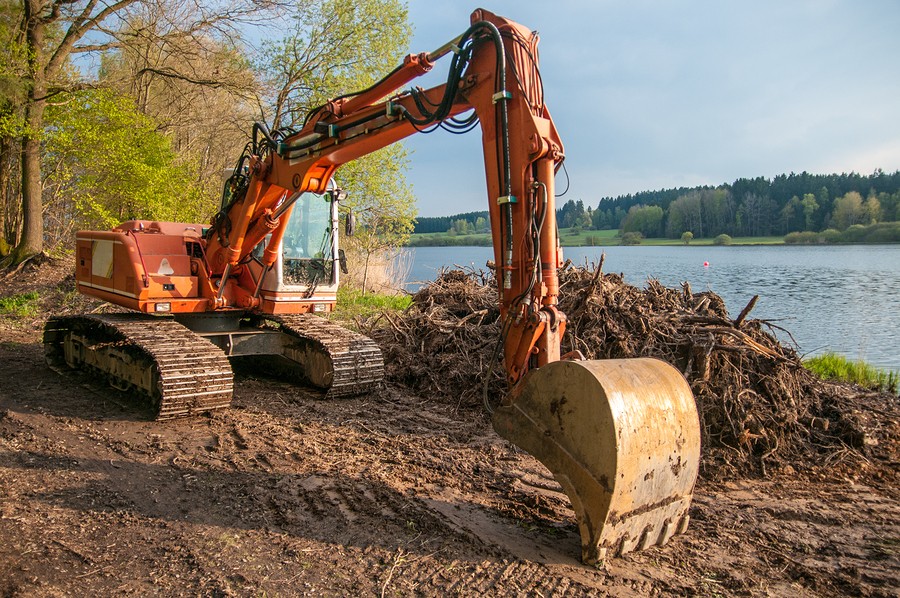Getting prepped and ready for a construction project is no easy task. Between resourcing, budgeting, and scheduling, it can be challenging to carve out time to examine what environmental permits you might need.
Here, we put together a shortlist to make getting this task out of the way a bit easier. It includes a list of permits you might need, when you need to obtain them, and where to get them.
Note: Always check state and local regulations before starting any construction project, as their rules could be more stringent than federal regulations.
National Pollutant Discharge Elimination System (NPDES) permits
Construction sites are full of debris, loose stone and sand, and harsh chemicals — it’s just a side effect of activities like clearing, grading, and excavating. And when rainfall or snowmelt sweep these materials into nearby waterways, community water sources can become polluted.The Environmental Protection Agency’s (EPA’s) National Pollutant Discharge Elimination System (NPDES) permitting system ensures that waterways are protected in these events, so there’s a chance you may be required to obtain a permit for your construction activities.
When you need a NPDES permit
The general rule of thumb is that whenever your construction activities disturb one or more acres or if you’re within 500 feet of a waterway, you need a permit. It’s not always that simple, though, so if you’re not sure if you need a NPDES permit for your construction project, enter your email below. We’ll send you EPA’s “Do I need a Permit?” flowchart.
Enter your email here to get the flowchart right to your mailbox.
Where to get a NPDES permit
Before moving forward with the permitting process, check to see if your state is authorized to issue NPDES permits. If your state is unauthorized, you’ll obtain the permit directly from the EPA. Further, check with your local authorities to determine if they have their own requirements.
More EPA resources
Section 404 permit
Section 404 of the Clean Water Act (CWA) is a program designed to regulate dredge and fill activities within surface waters and wetlands. Construction is just one of several activities that are regulated under the program.
| Wetlands, which include swamps, marshes, and bogs, are defined as areas that are “inundated or saturated by surface or groundwater at a frequency and duration sufficient to support, and that under normal circumstances do support, a prevalence of vegetation typically adapted for life in saturated soil conditions.” |
When you need a Section 404 permit
If you’re doing any construction activities in U.S. waters, you’ll more than likely need a permit under Section 404 of the CWA. When you apply for the permit, you must show that:
- Steps to avoid impacting wetlands, streams, and other aquatic resources have been taken
- Potential impacts have been minimized
- Compensation may be required for all remaining unavoidable impact
Most discharges are covered under the general permit. However, any discharges with significant impact may have to be covered by an individual permit and can take up to three months for the Army Corps of Engineers (COE) to approve.
Where to get a Section 404 permit
In most states, you can obtain a Section 404 permit from your COE district office. But as always, check with your state and local authorities to determine if they have their own set of requirements. For example, Michigan has assumed responsibility for issuing 404 permits.
More EPA resources
Hazardous waste permit
If you generate and store hazardous waste at your construction site for an extended period, you may need to get a hazardous waste permit. These permits are covered under the Resource Conservation and Recovery Act (RCRA). The length of time you can store a hazardous substance on site varies depending on generator status.
- Conditionally-exempt small quantity generator (CE-SQG) — no time limit
- Small quantity generators (SQG) — 180 days / 270 days if treatment, storage, and disposal facility is more than 270 miles away
- Large quantity generators (LQG) — 90 days
For more information on hazardous waste generator status, visit this page.
| It’s critical to determine what hazardous waste exists on your construction site to ensure your workers’ safety and regulatory compliance. Examples of hazardous waste include: – Asbestos – Lead – Mercury waste – Solvent/thinner – Fuel – Stains – Unused paint – Oil/lubricants – Compressed gas cylinders – Unpunctured aerosol cans |
Where to get a hazardous waste permit
Most hazardous waste permits are issued by individual states. If your state isn’t authorized to issue hazardous waste permits, contact your regional EPA office.
More EPA resources
Air permitting under the Clean Air Act (CAA)
You may also be subject to air permitting requirements under the Clean Air Act (CAA). Ozone depleting substances, volatile organic compounds (VOCs), and dust from vehicle traffic are just a handful of things that can impact air quality on a construction site. However, unlike the permitting programs we’ve mentioned above, air permitting requirements for construction are typically controlled at the state and local level. To find out if you need air permits, contact your state and local air permitting authority.
Visit the EPA’s CAA page for more information.
—
Navigating regulations and permitting requirements can be tough, but you don’t have to do it alone. Talk to one of our environmental health and safety professionals to make sure your next construction project is compliant with federal, state, and local regulations.

